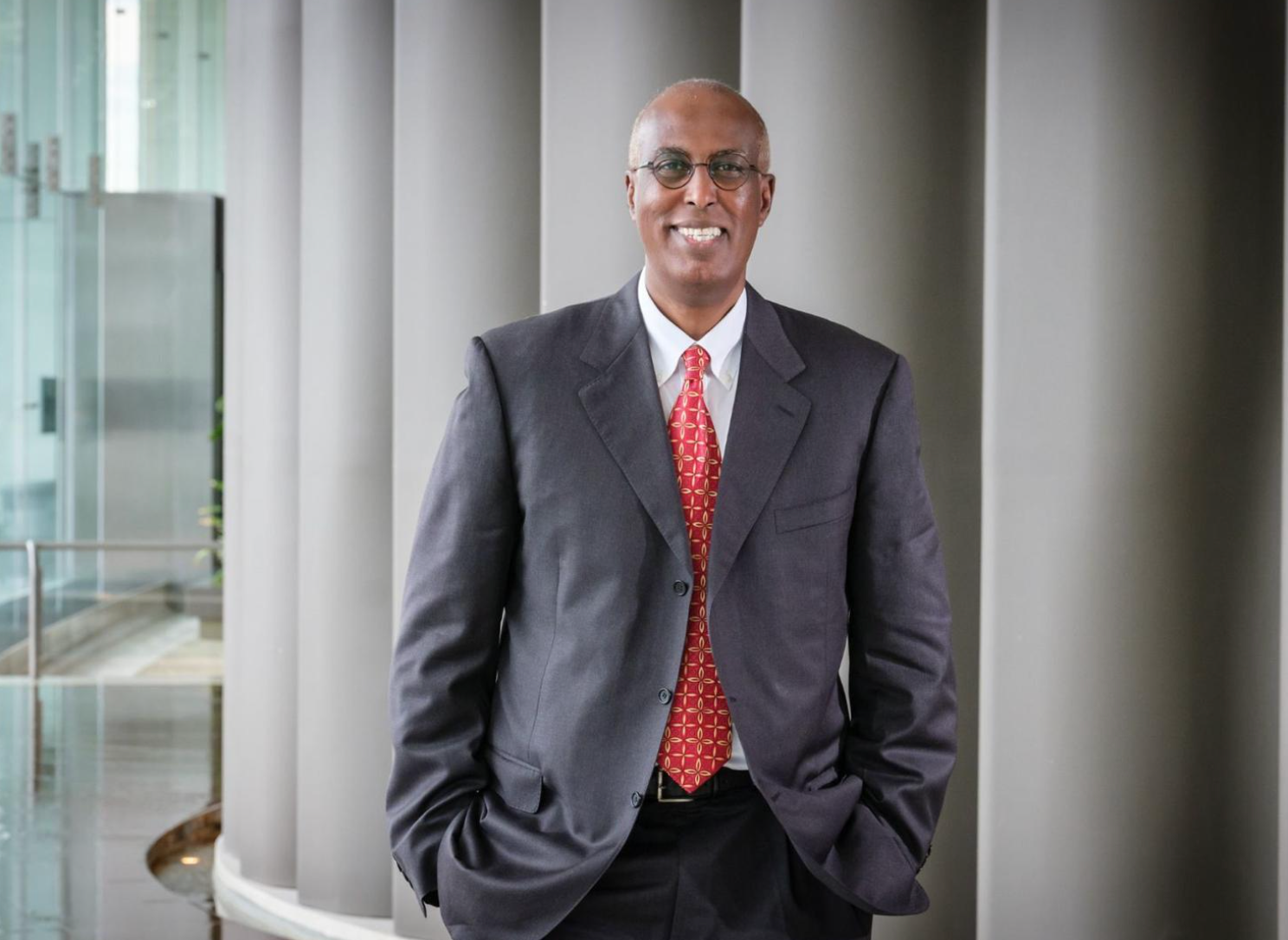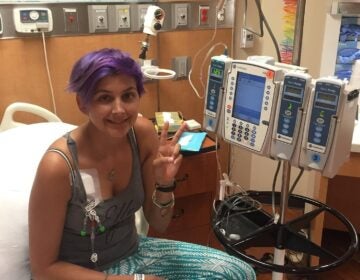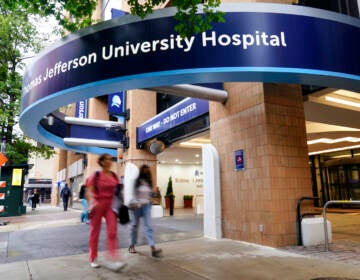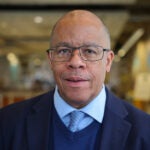New dean of medicine at Thomas Jefferson University plans to double down on diversity to improve health outcomes
Dr. Said Ibrahim, appointed dean of Sidney Kimmel Medical College in December, says a more diverse medical school is key to improving health disparities.
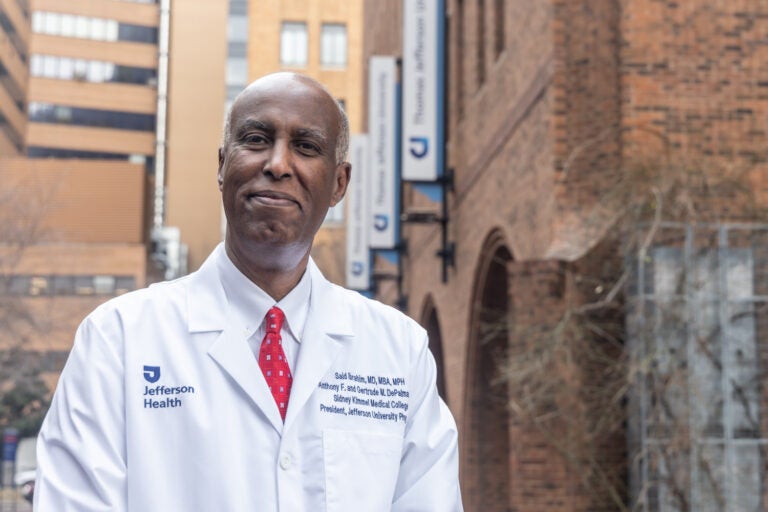
Dr. Said Ibrahim is the new dean of Jefferson Medical School. (Kimberly Paynter/WHYY)
From Philly and the Pa. suburbs to South Jersey and Delaware, what would you like WHYY News to cover? Let us know!
Growing up in East Africa, only the “rich and powerful” could afford health care, according to the new dean at Jefferson University Medical School — but Dr. Said Ibrahim, a native of Somalia, said he was surprised to learn that is often true in the U.S. as well.
Ibrahim was appointed dean of Thomas Jefferson University’s Sidney Kimmel Medical College in December. With 18 hospitals, the Jefferson University health system is one of the largest in Philadelphia and one of the nation’s oldest medical schools.
As professor and vice chair of medicine at the University of Pennsylvania Medical School between 2010 and 2018, Ibrahim was assigned to the Veterans Administration Medical Center in Philadelphia, where he studied health disparity related to osteoporosis in the knees and hips.
“We wanted to understand how the health care system works for people regardless of their background, or their economic status, their ethnicity, race, gender or a patient’s sexual orientation,” Ibrahim said. “If you think about who gets a knee or hip replacement, the primary decision maker, in addition to the patient, is the orthopedic surgeon. But orthopedic surgery is one of the least diverse specialties in the country. So, what you have is a scenario where we don’t have diversity in orthopedic surgeons, so you don’t have someone who realizes different patient’s backgrounds and perspectives. This actually contributes to the disparity.”
For example, Black patients were less likely to be offered hip or knee replacement as treatment and less likely to accept it when offered, he said.
Previously, Ibrahim, a primary care doctor, was senior vice president of Northwell Health’s Medical Service Line. As part of that role, Ibrahim was chair of the Department of Medicine at Long Island Jewish Medical Center, Northshore University in Manhasset in Long Island, N.Y., and the Donald & Barbara Zucker School of Medicine at Hofstra/ Northwell.
According to Ibrahim, one way to alleviate health disparity is to recruit doctors, nurses and other medical staff from diverse backgrounds. “One of the things that I intend to do,” explained Ibrahim, “is make the case that we need a diverse workforce and students.”
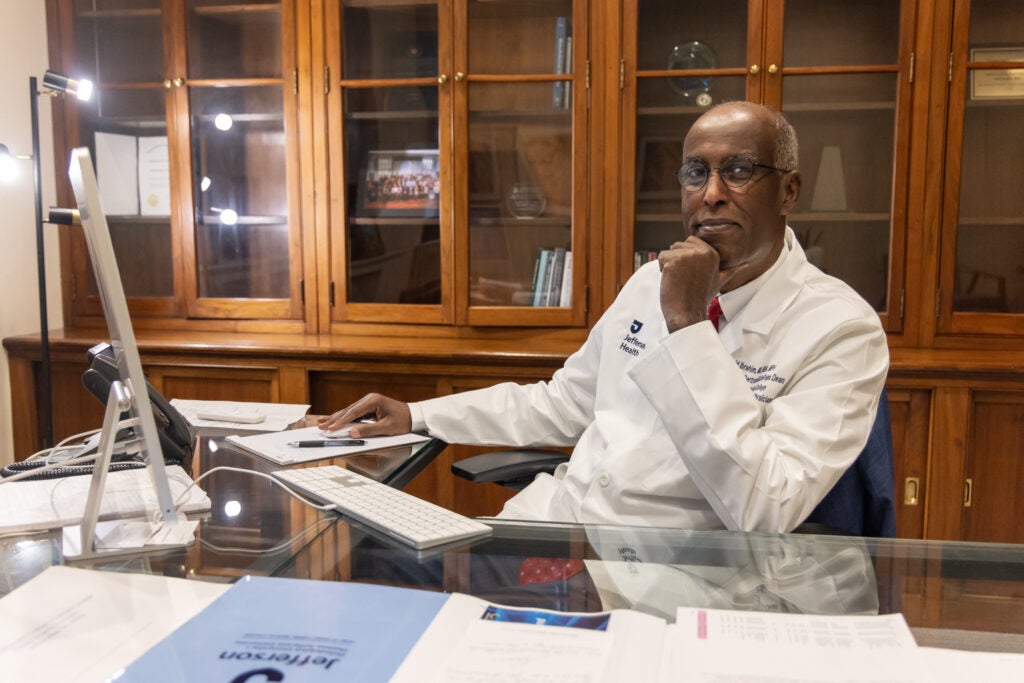
He plans to recruit at Historically Black Colleges and Universities (HBCUs) and other diverse institutions, and create mentoring and other programs and scholarships to achieve that goal.
According to research by the Association of American Medical Colleges (AAMC), a more diverse physician workforce improves health outcomes.
The subject of recruitment of doctors from traditionally less represented communities and experiences has been in the news lately.
In February, the Albert Einstein College of Medicine in the Bronx said it would now offer tuition-free medical school for qualified candidates, thanks to a $1billion gift from Ruth L. Gottesman, chair of the Einstein Board of Trustees. It was the largest gift to a medical school ever.
Dr. Yaron Tomer, the dean of the Einstein Medical School, said in a statement that the donation “radically revolutionizes our ability to continue to attract students who are committed to our mission, not just those who can afford it. We will be reminded of the legacy this historic gift represents each spring as we send another diverse class of physicians out across the Bronx and around the world to provide compassionate care and transform their communities.”
Other medical schools, especially in New York, have increased scholarship opportunities for medical school students.
In 2018, NYU Grossman School of Medicine began offering free tuition for all who qualify. A year earlier, Columbia University Medical School offered scholarships for those students whose families earn less than $125,000 a year.
According to the Education Data Initiative, the average cost of medical school is about $58,000 a year, and totals about $235,000 over four years.
In cities such as New York, where the cost of living is relatively high, that cost can rise to about $100,000 a year.
Medical professionals say that making medical school tuition free could help students who are unburdened by debt go into the lower-paid physician jobs, such as pediatrics and mental health, or to practice in underserved communities.
Ibrahim acknowledged that recruiting diverse medical students to Jefferson could be a challenge because of the competition from other medical schools and the relatively small pool of diverse candidates.
“We have to invest in those who can’t afford to go to medical school,” Ibrahim said. “They have to see that you are committed and that you will take care of them. The optics have to be right.”
Ibrahim earned a bachelor’s degree from Oberlin College and a medical degree from Case Western Reserve University School of Medicine. In addition, Ibrahim has a master’s degree in public health from Harvard University’s School of Public Health and holds an MBA from the MIT Sloan School of Management. He completed his internship and residency in internal medicine at Brigham and Women’s Hospital at Harvard Medical School.
Dr. Olugbenga Ogedegbe, a professor of population health at New York University Medical School, has known Ibrahim for 20 years.
They met in a professional group when Ibrahim was a professor of population health sciences and an administrator at Weill Cornell Medicine in New York.
“Every dean has to find ways to support recruitment,” Ogedegbe said. “If you don’t have an endowment, it is difficult to create programs. As a Black dean, he will have an advantage. He is a great inspiration for all of us. I think he will do well.”
Kevin Carolina, a second-year medical student at Jefferson and a co-founder of the Black Men in White Coats at Jefferson Medical School, said Ibrahim is inspirational.
“To us, Dr. Ibrahim really does represent that it is possible to ultimately be in leadership roles, as far as medicine is concerned,” Carolina said. “The common adage is that it is very difficult to be something that you cannot see. By having Dr. Ibrahim here, it is going to continue to inspire students to get to his position, but he is also going to be crucial to lift up people behind him. When we met with him he expressed just how dedicated he was to do so.”
Jefferson Medical School’s Black Men in White Coats group, a local chapter of a national group that advocates for more Black men in medical school, seeks out young Black students as early as elementary and school, so they can see Black men who are interested in becoming doctors. The chapter also helps students in college who are on the pre-med track with the medical school application process.
Ignatius Harzelwood, a second-year student and a co-founder of the group, said medical school can be extremely challenging because of the workload and complexity.
“Coming into medical school, I didn’t have many people in my family in health care,” Hazelwood said. “In a class of our size… [there are] a lot of students who are legacies and have generations of doctors in their families and it can be isolating. But I feel that Jefferson was the right choice for me because of the group of guys that we have here. We are able to connect on a personal level. I consider them to be brothers and it has made the whole medical school experience less stressful. We want to help create that type or environment in all medical schools.”
Despite the 2023 U.S. Supreme Court decision that prohibited colleges and universities from using race as a basis for admissions, the 2023-24 class of U.S. medical school students is more diverse than previous years.
According to the AAMC, Black students made up 10% of the class, up from 8.4% in the 2016-2017 class, and students of Hispanic, Latino or of Spanish origin comprise 12.7% of the class compared with 10% in the previous years. There are also more women enrolling in medical school.
“We have come to realize that for patients to trust the health care system, we need to make sure that the health care system and the people who provide the care reflect the community,” Ibrahim said. “They need to reflect the community from which the patients come from, because if you don’t, then you create a gap in people’s ability to work together.”

Get daily updates from WHYY News!
WHYY is your source for fact-based, in-depth journalism and information. As a nonprofit organization, we rely on financial support from readers like you. Please give today.


